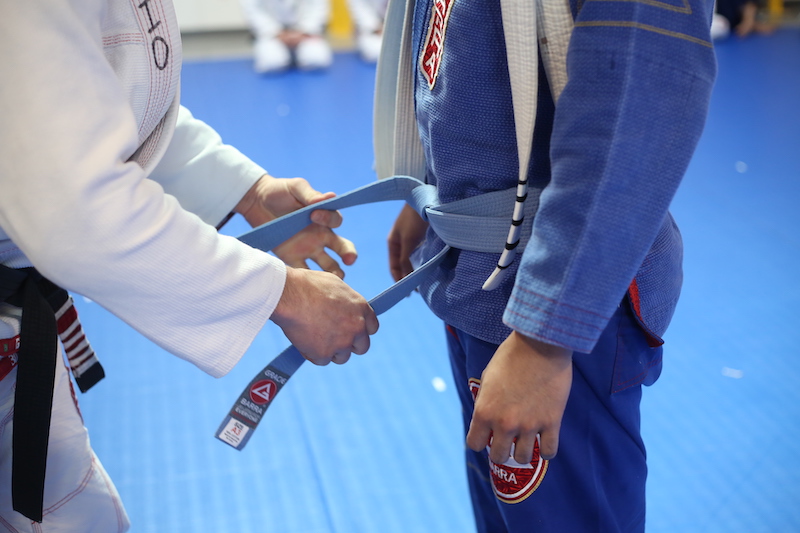GB Student Question “What do I need to be a blue belt?”

Following the end-of-year promotions and some belt graduations at the Jiu-Jitsu school, one student asked about the criteria for someone to become a blue belt.
ㅤ
This is a common question among first-year students. The short answer is that there are no standard criteria for promotion to blue belt. It isn’t about tournament wins or checking off a list of techniques. And the evaluation can vary between different Jiu-Jitsu schools.
ㅤ
Have you checked out the GB Online Instagram account?
https://instagram.com/graciebarraonline @graciebarraonline
ㅤ
Even with no setlist of techniques to be met, there are some more general guidelines that we can consider when evaluating when a white belt student is getting ready to be promoted to blue belt.
ㅤ
1- The minimum time and consistent class attendance. Quite simply, if you are not attending class at your GB school regularly, it is unlikely you are a candidate for promotion. And even though you are progressing rapidly, a bjj student needs to spend a minimum amount of time at the white belt.
ㅤ
In a recent interview on GB, Prof. Draculino had this to say on the subject of belt promotions.
ㅤ
Prof. Draculino: “Maintaining the integrity of the art. One of the points to maintain is to go by the guidelines of minimum time and a technical level in order to give the belts. A lot of people think and have the misconception that Gracie Barra promotes solely by time. You know…you come to this many classes during this many months or whatever, and then you get your new belt.
ㅤ
It’s not exactly true. The minimum time is a prerequisite, but it’s up to the professors and the instructors’ staff to decide when this person will get the next belt or not. I think that this is the best criteria because we have experienced enough to know each individual’s needs and possibilities. You can not create a general rule. “
ㅤ
Your professor who observes your training on a regular basis over time is best equipped to determine your level.
ㅤ
2- Knowledge of the positions and most important basics
Thorough knowledge of berimbolo or flying triangles is not a prerequisite for promotion…but a solid grasp on the basics is!
ㅤ
Using the GB1 Fundamentals as our example, each week we learn the highest percentage, most effective techniques for each ground position in the Jiu-Jitsu positional hierarchy.
GB1 Curriculum
1) Guard Bottom
2) Side Mount Bottom
3) Guard Top
4) Mount / Knee on Belly Bottom
5) Guard Bottom
6) Back mount / Turtle Bottom
7) Guard Top
8 ) Side Mount Top
9) Guard Bottom
10) Mount / Knee on Belly Top
11) Guard Top
12) Back mount / Turtle Top
13) Guard Bottom
14) Side Mount Bottom
15) Guard Top
16) Mount / Knee on Belly Bottom
ㅤ
The Gracie Barra student should understand all of the positions and be competent in the most important techniques from each of these positions. To know 2 or 3 solid moves from each of the positions in the curriculum.
ㅤ
3- Being able to apply the techniques in live sparring.
Grandmaster Helio Gracie said that a blue belt in Jiu-Jitsu should have enough technique to be able to defeat a larger untrained opponent. This means that beyond merely being able to identify and demonstrate a technique, that the student has developed enough skill that they can apply their basic techniques against an opponent in live sparring.
ㅤ
This can reveal itself during rolling when the student finds themselves – for example – in a bottom position. How does the student deal with the situation? Are they deliberately applying one of their sides mount escapes? Or are they reverting to raw survival instinct and thrashing about using a lot of energy? This is a key indicator that the student has internalized the techniques for a position and has enough skill to be able to recall them and apply their knowledge.
ㅤ
See also on GB Blog: GB Inspiration: Prof. Flavio Almeida on overcoming struggles
ㅤ
Writer: Mark Mullen, Gracie Barra Black Belt
